26+ Sample Photography Contracts
-

General Photography Contract
download now -
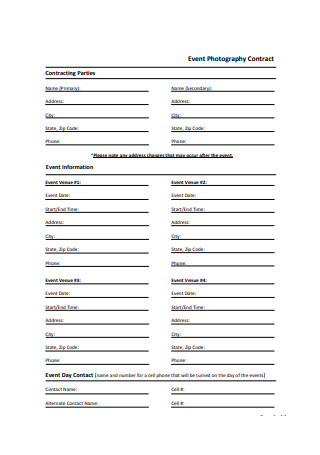
Event Photography Contract
download now -

Sample Event Photograph Contract
download now -
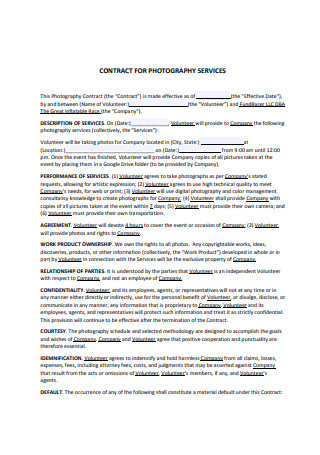
Photography Services Contract
download now -
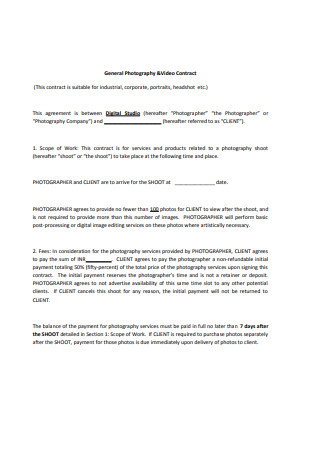
Sample General Photography Contract
download now -
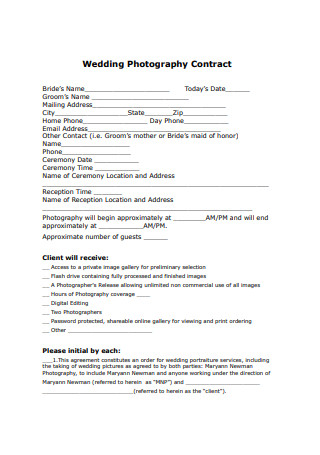
Wedding Photography Contract
download now -
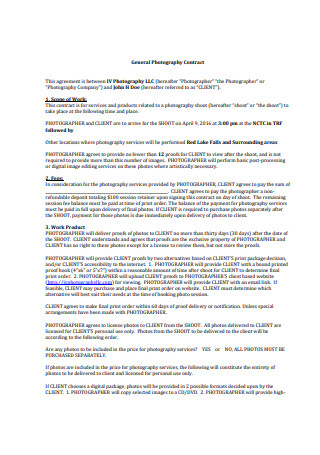
General Photography Contract Example
download now -

Sample Wedding Photography Contract
download now -
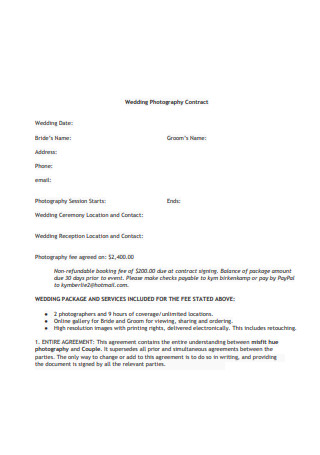
Simple Wedding Photography Contract
download now -

Photography Portrait Contract
download now -

Birth Photography Contract
download now -
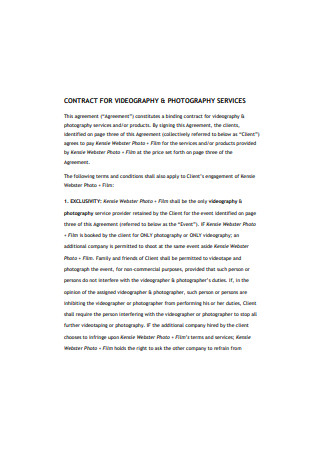
Photography Services Contract Format
download now -
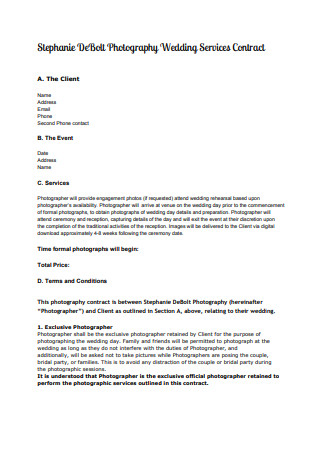
Wedding Photography Services Contract
download now -
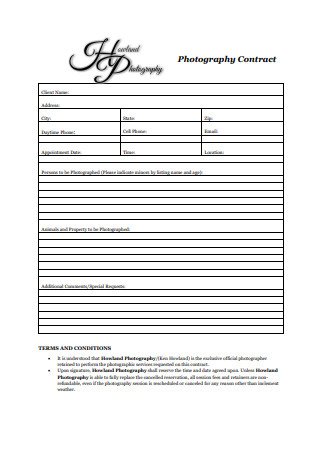
Basic Photography Contract
download now -
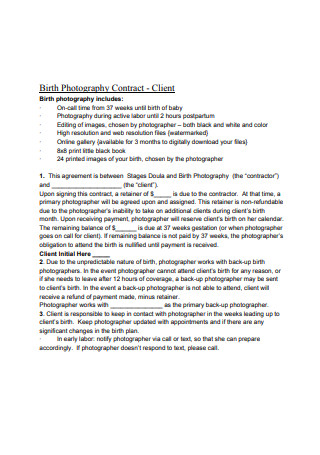
Photography Client Birth Contract
download now -
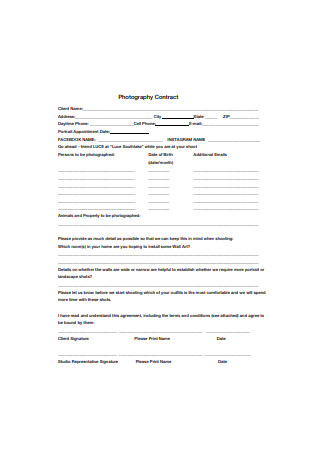
Standard Photography Contract
download now -
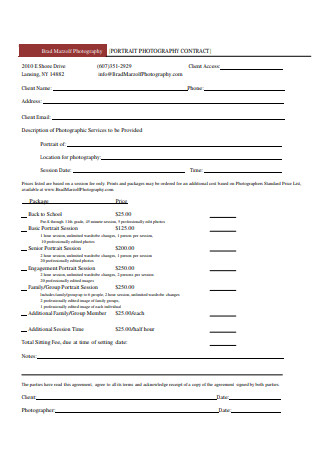
Photography Portrait Contract Format
download now -
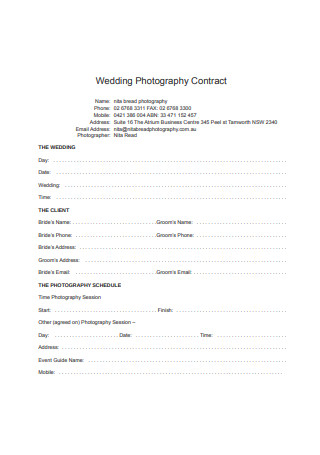
Basic Wedding Photography Contract
download now -
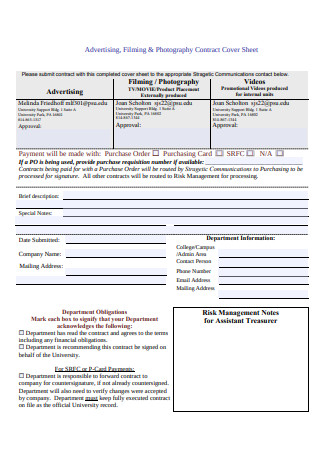
Photography Contract Cover Sheet
download now -
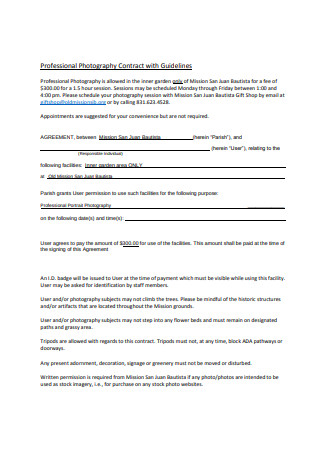
Professional Photography Contract
download now -
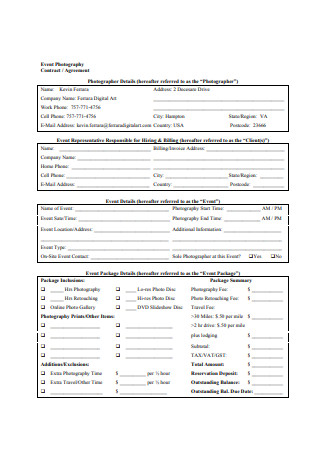
Sample Event Photography Contract
download now -
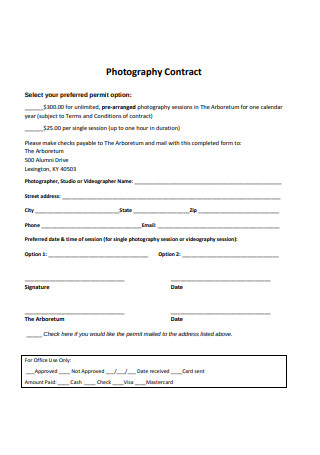
Sample Photography Contract Format
download now -

Basic Wedding Photography Contract Example
download now -

Photography Contract Format
download now -
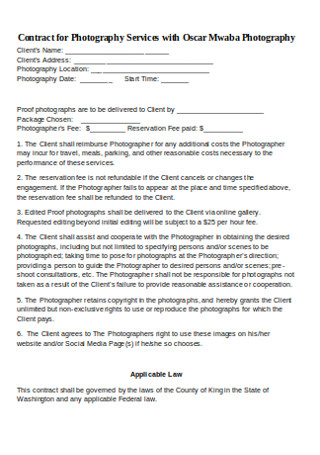
Basic Photography Service Contract
download now -

Digital Photography Contract
download now -
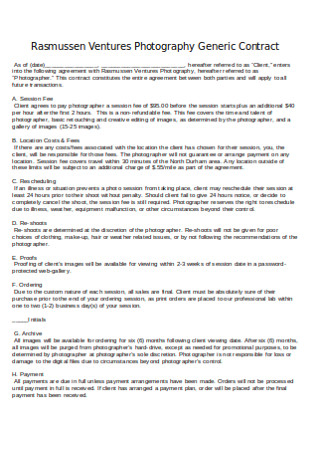
Sample Ventures Photography Generic Contract
download now
What is a Photography Contract?
The need to document special events provided a business opportunity. With the increasing demand for this service, a photography contract is a necessity. Photography contracts contain the details of the agreement between the service provider and the client. It primarily includes the nature of the service required, payment arrangements, and contact information of both parties. Content regarding the nature of the service includes the effectivity of the agreement. Apart from that, the work schedule of the photographer or the team for a particular event should also be present. This information includes the number of hours of work, hours for preparation, and the number of days for processing the images. These are some of the essential details. You can choose to add other details that are necessary for your agreement.
Photography contracts are essential in ironing out the business agreement between the involved parties. At weddings, photography services are usually needed before the wedding date. This particular arrangement must be indicated in the business contract. If not, the client cannot demand the services before the actual wedding date. In this case and similar scenarios, having a contract set parameters to the services of the provider. At the same time, it makes sure that the provider is adequately compensated for their skills and efforts. These contracts are not only for those who are in the commercial scene. It is also significantly helpful for beginners and freelance photographers.
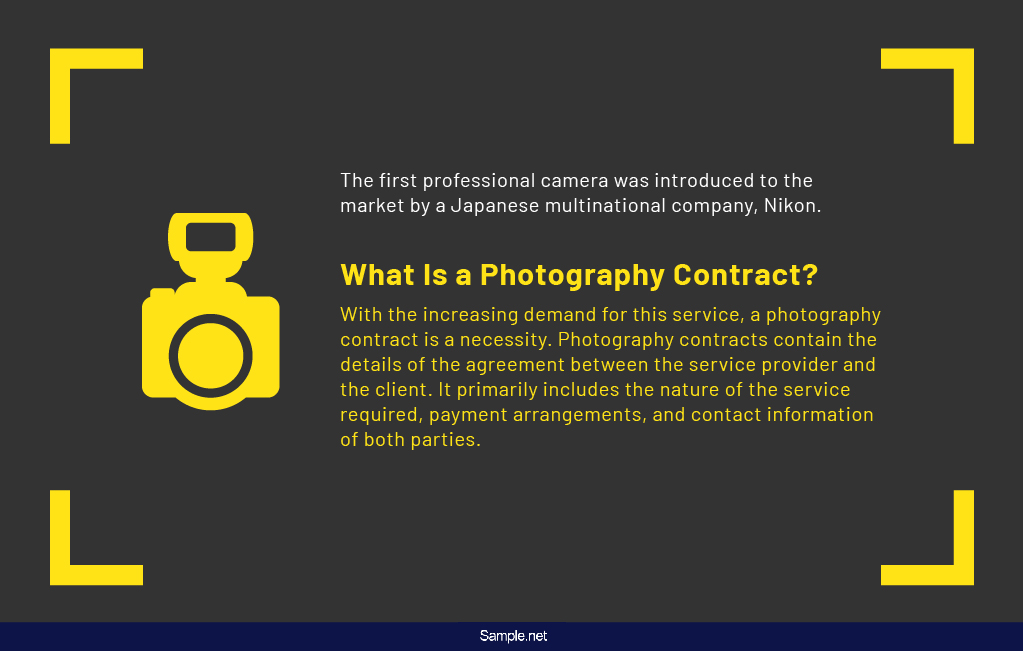
The Components of a Photography Contract
Before everyone had the means to take their own photographs, photography studios were everywhere. Personal family portraits were captured and developed by professionals. These studios had complete equipment to take the best pictures. And with this, they also ventured out to document events such as wedding and graduation ceremonies, among others. In handling larger events, a contract was necessary to finalize the agreement, especially about the payment terms. Here are some of the key elements that are needed in a photography contract.
The Merits of a Photography Contract
The invention and development of cameras opened new opportunities. Photography became a business. From mixing chemicals to capture portraits to professional cameras with long and wide lenses, these processes provided a living for enthusiasts. Up until now, what is seen to be a hobby provides a way of living for some people especially for freelancers who want to pursue a passion. And because it is a valuable service that demands adequate payment, a photography contract is required. It provides several advantages for the parties involved, but mostly the service provider.
How to Compose a Photography Contract?
Some people see contracts and other paperwork as unnecessary. These are seen as additional hassle and processing it takes too much time. Coming up with several drafts before finally composing the final version eats up a lot of time that can be allotted for dealing with clients, processing products, and several mini sessions. But, these people fail to see that the contract helps run the business. A couple pieces of paper can provide security from several risks. So, we present you with a short and foolproof process on how you can come up with your version of a photography contract with less hassle and stress.
Step 1: Accurate and Brief Introduction
A contract’s introduction must be no-nonsense and dives directly to the necessary details. The reader must immediately know the main point of the document. No need for flowery and unnecessary statements. The parties involved are introduced directly and assigned labels according to their role in the arrangement. The party of the photographer is labeled as the ‘Service Provider’ or simply ‘Photographer’. And the other camp is the ‘Client’. These labels are then used throughout the succeeding stipulations to avoid confusion and mix-ups. Also, it is essential to list down the services of the photographer early on to see if the services, which will be introduced later on, are within their limits and capabilities.
Step 2: Specify Details of Required Services
After introducing the parties, the services required by the client are listed down in detail. It should indicate what is primarily needed. It can be photoshoot only or photoshoot with processing and printing. After this main detail, the number of workdays must follow. If the project goes on for several days with particular time frames, it is best to make use of a Gantt chart to properly layout the schedule. Apart from the details mentioned, it is also a best practice to specify the names and business contact numbers of the photographers who will handle the shoot in case there are delays or if the client makes sudden changes in the set schedule. As a service provider, you must be keen on providing the details of the service to set clear expectations for the client. So that the clients will know the limits of the services that you can provide.
Step 3: Sort Out Payment Arrangements
One of the vital roles of a contract is to make sure that the photographer will receive adequate payment after delivering the output. So, a large portion of the contract is dedicated to finalizing the payment arrangements. This section should include the demand for upfront fees if there are any, and when the payment should be given. The schedule of the payment can vary according to the arrangement, it can be time-bound or after a particular deliverable is accomplished. The payment arrangements can also include the payment scheme for additional services which might be demanded after signing the contract. This extra measure makes sure that all the services and extra efforts of the photographer are properly compensated. The payment method is also a crucial piece of information to include in writing. There are several methods available and both parties can choose one that is most convenient for both.
Step 4: Address Image Ownership Concerns
Copyright and intellectual property is a grave issue among arts services, especially among photography businesses. Modern technological development makes it feasible for internet natives to reproduce pictures without crediting the owner. It is fairly easy to bypass measures that protect intellectual rights. In order to counter these breaches, the contract should have a detailed stipulation containing the ownership and use of the image. Both parties can decide to have equal ownership of the images with additional perks for each party. The photographer can use the images as additional photos in their portfolios or they can use the images for advertising materials, provided that the client agrees to these arrangements. Moreover, the client can also be granted permission for unlimited reproduction of the images as long as the photographer is properly credited each time. These stipulations make sure that each party makes good use of the output.
Step 5: Termination and Cancellation Terms
At this point in writing the contract, all the details settling the limits of the arrangement are already complete. The remaining essential information concerns the end of the arrangement. The end date is provided. Apart from that, the other grounds for premature termination is also necessary. It may be a list of possible scenarios that the provider aims to avoid. The termination may also mean that the delivery is already completed even before the actual end date. Take note that the end of the contract means the end of the accountability of each party for the other party. The client can no longer demand additional services. But, if they want to, another photography contract is necessary.

